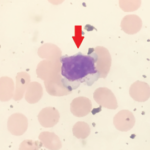
Image Credit: ajt/shutterstock.com
The U.S. Food and Drug Administration (FDA) has toughened the existing warnings for nonsteroidal anti-inflammatory drugs (NSAIDs) due to their stroke and myocardial infarction (MI) risk increase.1 Due to a continual review of these products, FDA is requiring label updates for all prescription NSAIDs. Over-the-counter (OTC) NSAIDs already list the increased risk of MI and stroke on their labels.
The FDA, the Arthritis Advisory Committee and the Drug Safety and Risk Management Advisory Committee recommended that prescription NSAID labels be updated to include the following information:
- MI or stroke can arise when first beginning an NSAID, and the risk may increase with longer use.
- MI or stroke risk appears to be higher with higher NSAID doses.
- Initially, it was felt that all NSAIDs had a similar risk, but new information makes it less clear that these risks are similar for all NSAIDs. The new data cannot determine if any particular NSAID is riskier than any other one.
- Patients with or without heart disease or heart disease risk factors are at an increased risk of NSAID-related MI or stroke.
- Generally, patients with heart dis- ease or heart disease risk factors have a greater chance of developing an MI or a stroke following use of NSAIDs than those that do not. This is due to a higher baseline risk.
- Patients who receive NSAIDs after a first MI were more likely to die in the first year following the MI vs. patients who did not receive NSAIDs following their first MI.
- Using NSAIDs increases the risk of developing heart failure.
Drug Facts labels of OTC non-aspirin NSAIDs will also be updated with MI and stroke information. Prescribers and patients should be on the alert for cardiac-related side effects while using NSAIDs. Any side effects with NSAIDs should be reported to the FDA’s MedWatch Program. Patients taking NSAIDs should be advised to get medical attention immediately if they experience such symptoms as chest pain, shortness of breath, trouble breathing, weakness in one part or side of their body, or slurred speech.
New Drug Application for Tofacitinib Citrate in Review
The FDA has accepted for review a new drug application for tofacitinib citrate (Xeljanz) 11 mg once-daily modified-release tablets to treat moderate to severe rheumatoid arthritis in patients who have had an inadequate response or demonstrated intolerance to methotrexate.2 Preliminary equivalency data have shown comparability between tofacitinib 11 mg once daily and tofacitinib 5 mg twice daily, the current FDA-approved dose.
The FDA is also reviewing tofacitinib 10 mg and 5 mg twice-daily tablets for treating adults with moderate to severe chronic plaque psoriasis who are candidates for systemic therapy or phototherapy. Tofacitinib is an oral Janus kinase inhibitor.
Abaloparatide-SC Trials
Abaloparatide-SC is a synthetic peptide analog of human parathyroid hormone-related protein (hPTHrP) with a subcutaneous (SC) delivery system currently
completing Phase 3 clinical trials.3 This SC delivery system is designed to be a self-administered, daily injection for patients with postmenopausal osteoporosis at high risk of fracture.
Previously, the ACTIVE Phase 3 trial data that were reported included patients attaining the primary endpoint of new vertebral fraction reduction of 86% and non-vertebral fracture reduction of 43% (the secondary endpoint), both statistically significant. Other secondary endpoints met were BMD increases at the total hip (3.44%), femoral neck (2.9%) and spine (9.2%), all statistically significant (P < 0.0001).
Recently reported are results of ACTIVExtend, which include patients from ACTIVE having no new vertebral fractures with combined abaloparatide-SC and
alendronate within six months.
From the beginning of the ACTIVE trial through this trial (a 25-month duration), these patients had an 87% reduction in new vertebral fractures, a 52% reduction in non-vertebral fractures, a 48% reduction in clinical fractures and a 58% reduction in major orthopedic fractures. Over 25 months, combination-treated patients had average BMD increases at the total hip (5.5%), femoral neck (4.5%) and lumbar spine (5.5%). Adverse events included arthralgia, dyspepsia, upper respiratory infections, urinary tract infections and bone pain.
FDA’s New Safety Website
The FDA has launched a new website for risk evaluation and mitigation strategies (REMS) at www.fda.gov/REMS called REMS@FDA. On July 13, 2015, the old site was archived.4 The FDA Amendments Act of 2007 gave the Administration authority to require REMS from manufacturers, ensuring that drug or biological product benefits outweigh their risks.5
The new site aims to provide more up-to-date and timely information on drug safety, REMS, requirements and more. At REMS@FDA users can sign up to receive approved REMS alerts. Users can also go to the site for information on approved REMS, shared REMS and updated REMS.
Michele B. Kaufman, PharmD, CGP, RPh, is a freelance medical writer based in New York City and a pharmacist at New York Presbyterian Lower Manhattan Hospital.
References
- U.S. Food and Drug Administration. Safety Alerts: Non-aspirin nonsteroidal antiinflammatory Drugs (NSAIDs): Drug Safety Communication—FDA strengthens warning of increased chance of heart attack or stroke. 2015 Jul 9.
- Pfizer Inc. News Release: Pfizer announces FDA acceptance for review of new drug application for a once-daily formulation of xeljanz (tofacitinib citrate) modified release tablets. 2015 Jul 2.
- Radius Health Inc. News release: Radius announces positive top-line data from ACTIVExtend trial, including combined 25 month results. 2015 June 17.
- Thulin L. FDA launches new REMS website. Drug Store News. 2015 June 17.
- U.S. Food & Drug Administration. Approved risk evaluation and mitigation strategies (REMS). 2015 Jun 22.
Editor’s note: These briefs were previously published on our website. Visit http:// www.the-rheumatologist.org for the most recent drug and safety updates.

